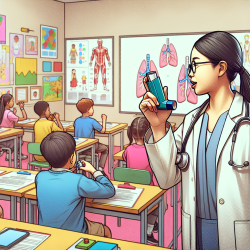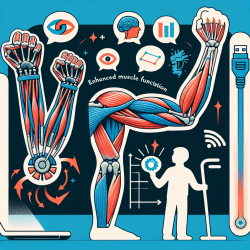Inhaled medications are a cornerstone of managing respiratory conditions in children, such as asthma and cystic fibrosis. However, the effectiveness of these treatments hinges on the proper use of inhaler devices. Research indicates that improper inhaler technique is a significant barrier to effective disease management, leading to poorly controlled asthma and increased healthcare costs. This blog post draws insights from the research article "Strategies for Improving Inhalation Technique in Children: A Narrative Review" by Volerman et al., offering practical strategies for practitioners to enhance their skills and improve patient outcomes.
The Importance of Proper Inhaler Technique
Proper inhaler technique ensures that medication reaches the airways effectively. Unfortunately, studies show that only 8-22% of children use their inhalers correctly. This misuse contributes to exacerbations, increased steroid use, and frequent emergency visits. Moreover, it leads to school absenteeism and financial burdens on families. Therefore, educating children and their caregivers about proper inhaler use is crucial.
Strategies for Improvement
The narrative review highlights several strategies that practitioners can implement across various settings to improve inhaler techniques:
- In-Person Education: Live demonstrations with healthcare providers are effective in teaching proper technique. The "Teach-to-Goal" method, which involves repeated demonstration until mastery is achieved, has shown promising results.
- Multimedia Tools: Videos provide consistent demonstrations of inhaler use and can be tailored to different age groups and languages. They are cost-effective and accessible both in clinical settings and at home.
- Technology-Enabled Supports: Devices that provide real-time feedback or telehealth sessions can enhance education without requiring in-person visits. These tools have become increasingly important during the COVID-19 pandemic.
Implementing Solutions Across Settings
The review emphasizes the importance of a multi-setting approach to reinforce proper inhaler technique:
- Clinical Settings: Regular assessment during clinic visits is essential. However, many providers fail to review inhaler techniques consistently.
- Pharmacies: Pharmacists play a vital role in assessing technique each time a prescription is filled. Face-to-face interactions have been shown to improve patient adherence.
- Schools: School-based programs offer opportunities for regular follow-up assessments and education without disrupting students' schedules.
The Path Forward
The narrative review suggests several future directions for enhancing inhaler technique education:
- Policy Changes: Reimbursement policies should support frequent education sessions across various settings and professionals.
- Team-Based Care: Expanding the roles of pharmacists and community health workers can ensure consistent education delivery.
- User-Centered Design: Engaging patients in the design of inhaler devices can lead to more intuitive products that reduce misuse.
By adopting these strategies, practitioners can significantly improve inhaler use among children, reducing morbidity and healthcare costs while enhancing quality of life.
To read the original research paper, please follow this link: Strategies for Improving Inhalation Technique in Children: A Narrative Review.










